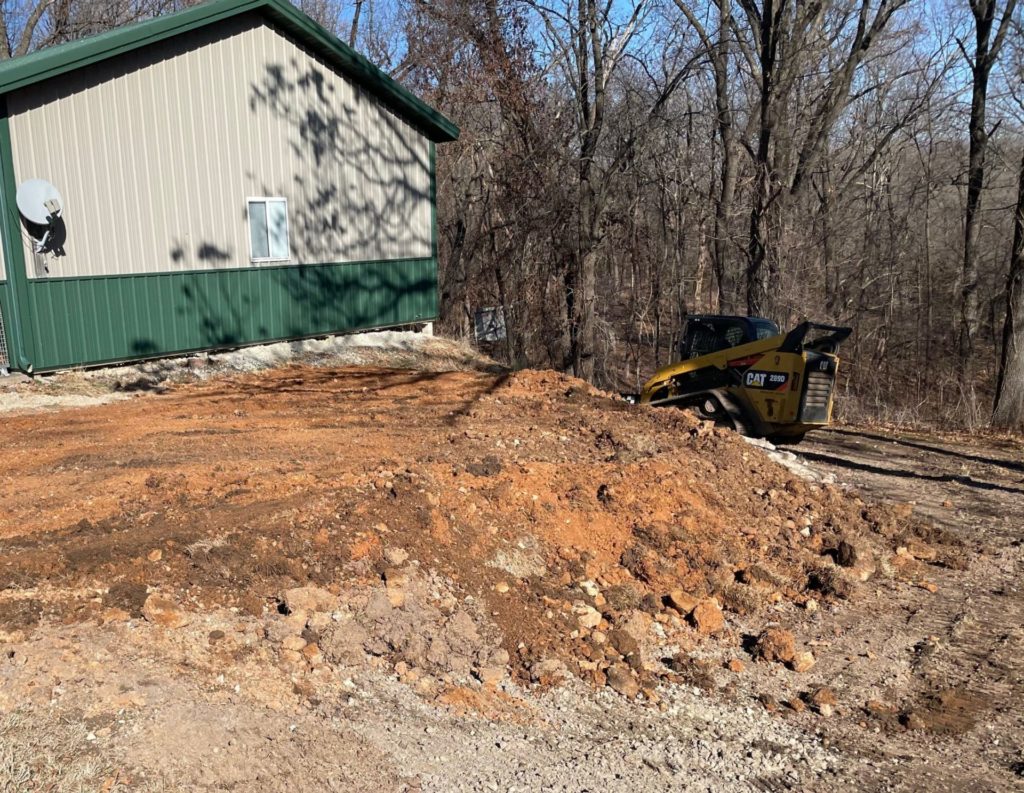Drainage Berm Design Rules for Creating A Beautiful Landscape

Posted on April 11, 2022 by Jeremiah Sooter
Now that it’s April, it seems only fitting to continue our focus on drainage solutions. More specifically, drainage berms. The options for berms in your yard are nearly endless.
But when it comes to creating a beautiful landscape using a drainage berm, there are rules to follow. Although there is no actual book of rules to reference when building a berm, a few “rules of thumb” apply.
The first rule is knowing what a berm is and its design as a function of your yard. But homeowners can gain some extra bonuses from a good design plan for a berm beyond just drainage.
The Drainage Berm

A berm is no more than a heaping pile of dirt. Although that is a good description of a berm, it doesn’t precisely answer its function or purpose. By design, a berm should redirect the flow of water around an object, like your home’s foundation, or protect a stunning flower bed.
A Drainage Berm’s Purpose
Suppose you’re a homeowner with a drainage problem and an exposure problem to any number of issues ranging from sound to an unappealing view. In that case, weather, or sediment buildup, a berm, in some cases, can resolve two challenges at the same time.
Although homeowners need to consider their reasoning for having a berm in the first place, an excellent first step is to consult a drainage specialist. These professionals are drainage experts who can share all the pros and cons of building a berm.
Because berms naturally redirect the water flow, you may inadvertently create a problem in your yard, like advancing erosion processes, or unintentionally direct water into your neighbor’s yard. Neither of which is the goal of building a berm.
The Drainage Plan
Before jumping in with both feet, though, you and your drainage professional must agree on the berm’s primary function and secondary purpose. The main objective of building a berm for many homeowners is to redirect the water flow to slow the rate of erosion.
It should be no surprise that a berm built to block unsightly views would now mimic an elegant design within your yard. Perhaps you’re looking to discourage foot traffic through your yard rather than divert water.
The benefits of building a berm are extraordinary, so having an established plan helps reduce costly mistakes. So it’s best to know what you are trying to achieve before installing a berm.
A Berm Sketch
Once you and your drainage expert determine your goals, the next step is to design the berm. The most exciting part of building a berm comes when it’s time to sketch out the shape, size, and placement of the berm in your front yard or outdoor living space.
You’ll have the opportunity to discuss other options with your drainage expert on selecting the right native plants for those of us living in the four-state region. Many drainage pros are also highly skilled landscape designers and architects.
They can help design a beautiful garden, or install a calming water feature, that you can take pleasure working in or watching from your living room window. Since berms mold into almost any shape, your berm could transform into a beautiful landscape design that includes outdoor space with a fire pit.
The Shape of a Berm
One of the creative aspects of a berm is its shape. Therefore, you can be as innovative as you like. The only limitation you will run into is the size of your property and your budget.
Whether you want it to be broad, like the shape of a kidney, or narrow with many connected tiny peaks, it’s up to you how imaginative you get with the berm.
It’s your contractor’s job to tell you what shape will function best while still delivering on your home’s curb appeal. There might be another functionally versatile way even to include a sitting area.
Common Berm Heights
A typical berm is no taller than 18 to 24 inches. You can even have a rolling berm with its highest peak rising to 48 inches; that’s a lot of dirt!
Although if you’re working on vertical garden designs, you’ll need to account for the surrounding terrain. By doing so, you’ll give the berm the illusion it blends into the natural curvature of your yard or property.
Berm Placement
Outlining where the berm will be in your yard is another essential factor in visualization. If you know the slope of your berm and the growing maturity of different plant materials, you’ll have better control on how to cultivate your berm.
If you do plant on your berm, it’s vital to tamp down the mound at least once to prevent collapses. Compacting the berm can also eliminate air pockets from uprooting any new foliage you or your contractor may plant.
To Berm, or Not to Berm
As a highly functional drainage system, a berm doesn’t have to be an unsightly heap of dirt. Instead, it can double as a beautiful landscape feature. A berm is a valuable investment that can prevent erosion and become a stunning focal point in your yard when it comes to home improvement.
The only way you will ever know for sure if a berm will be the right choice is to reach out to the professionals at Ground Up Services today. They can discuss your needs and wants to provide you with the best-laid plan for your berm or any other drainage solution that might work best for you and your family’s home.